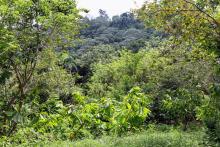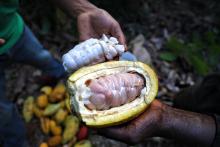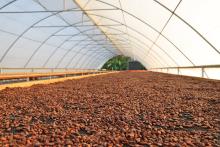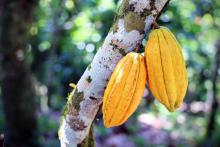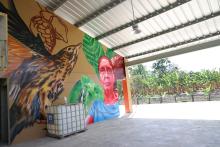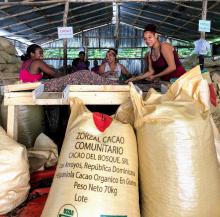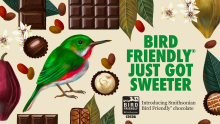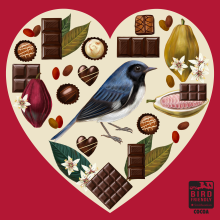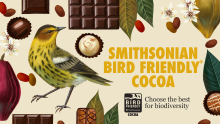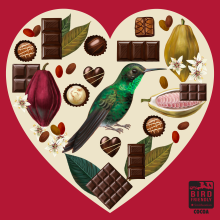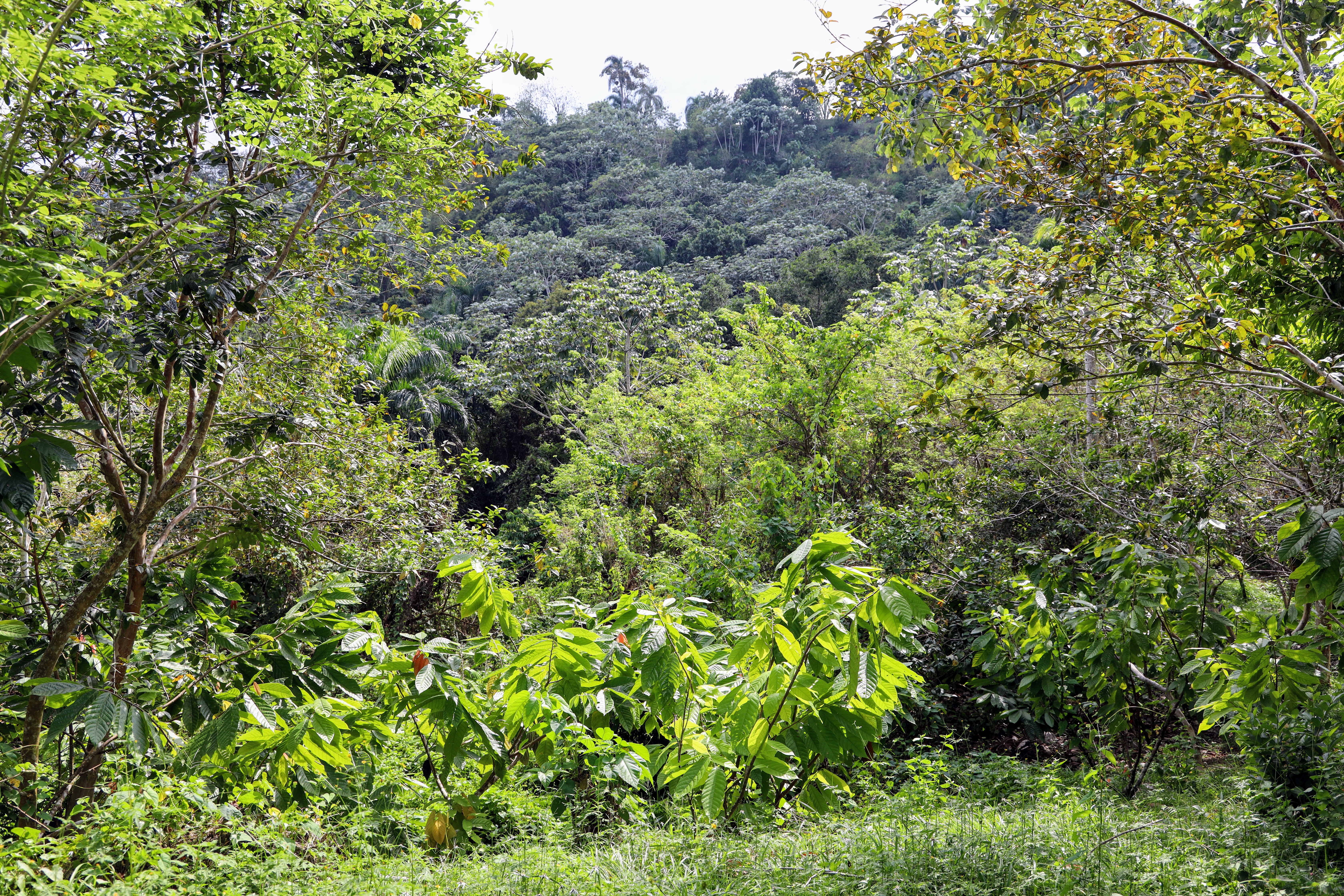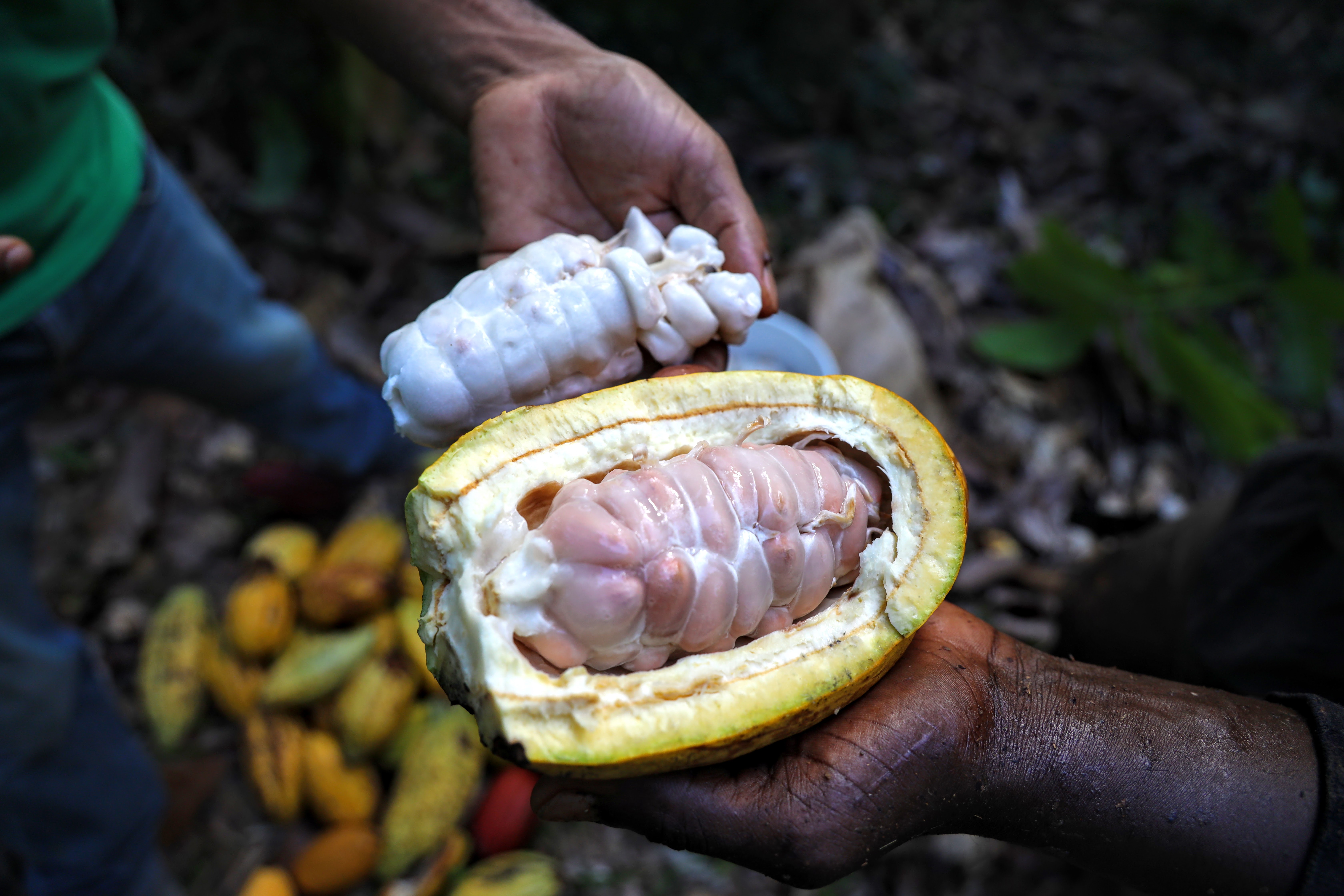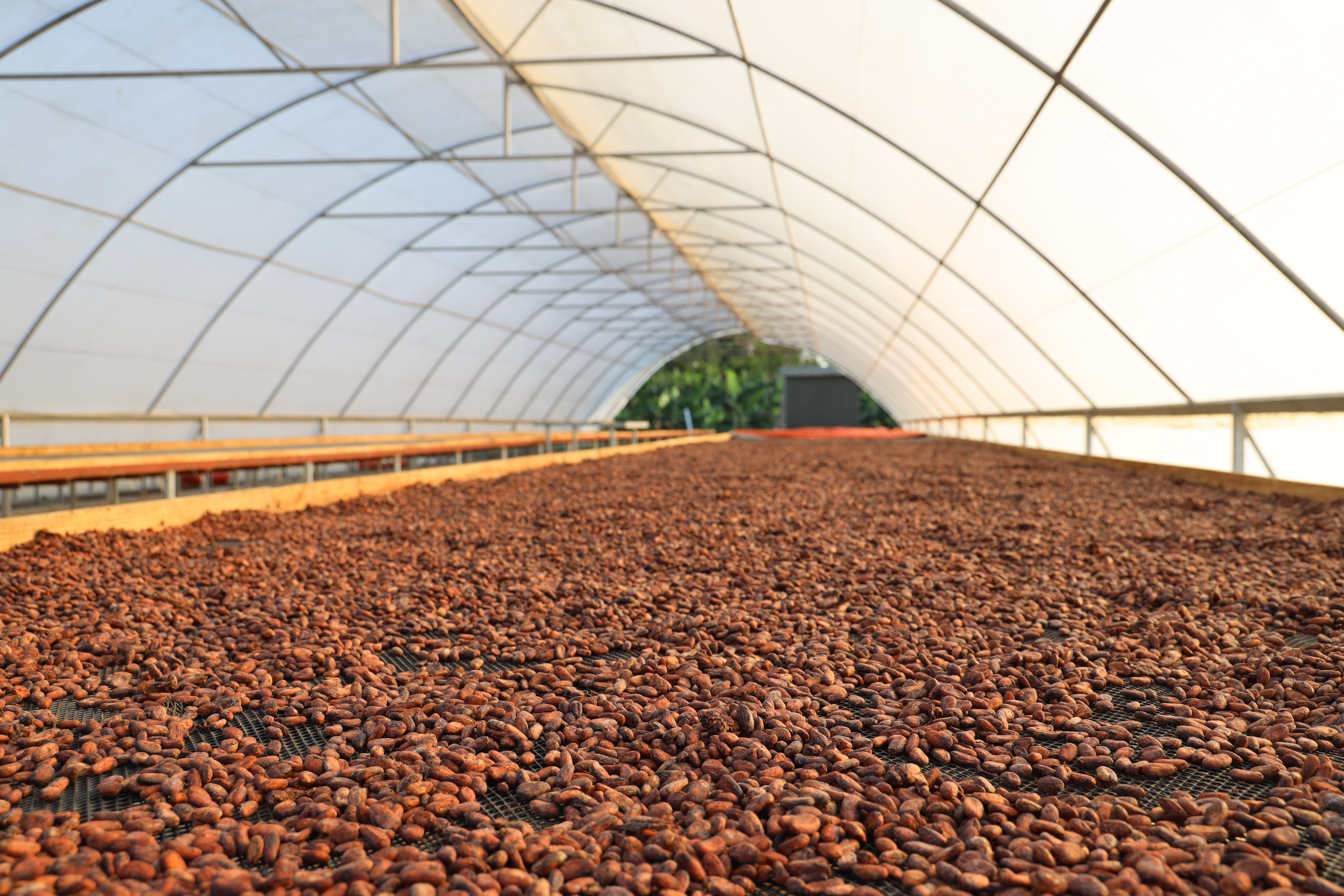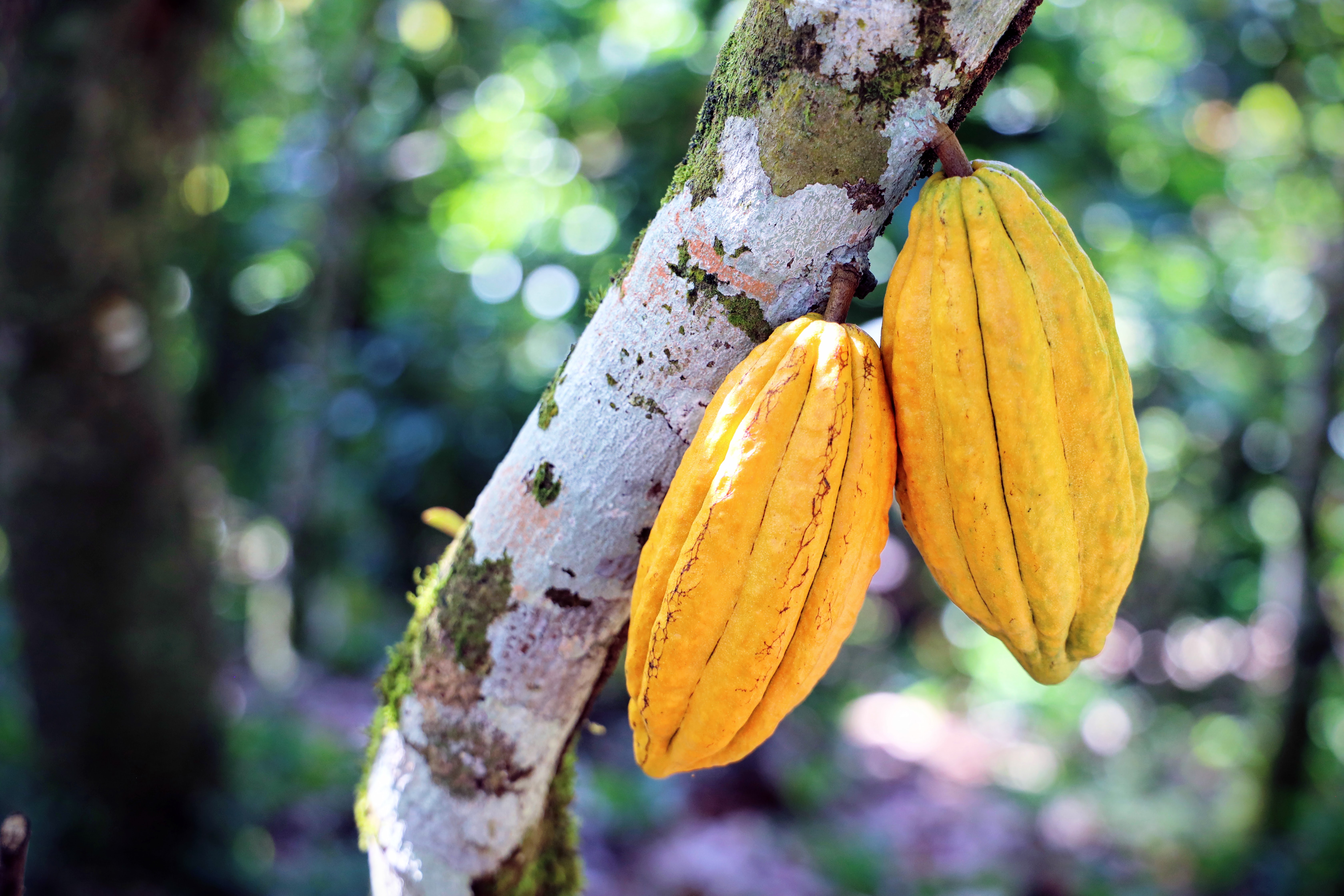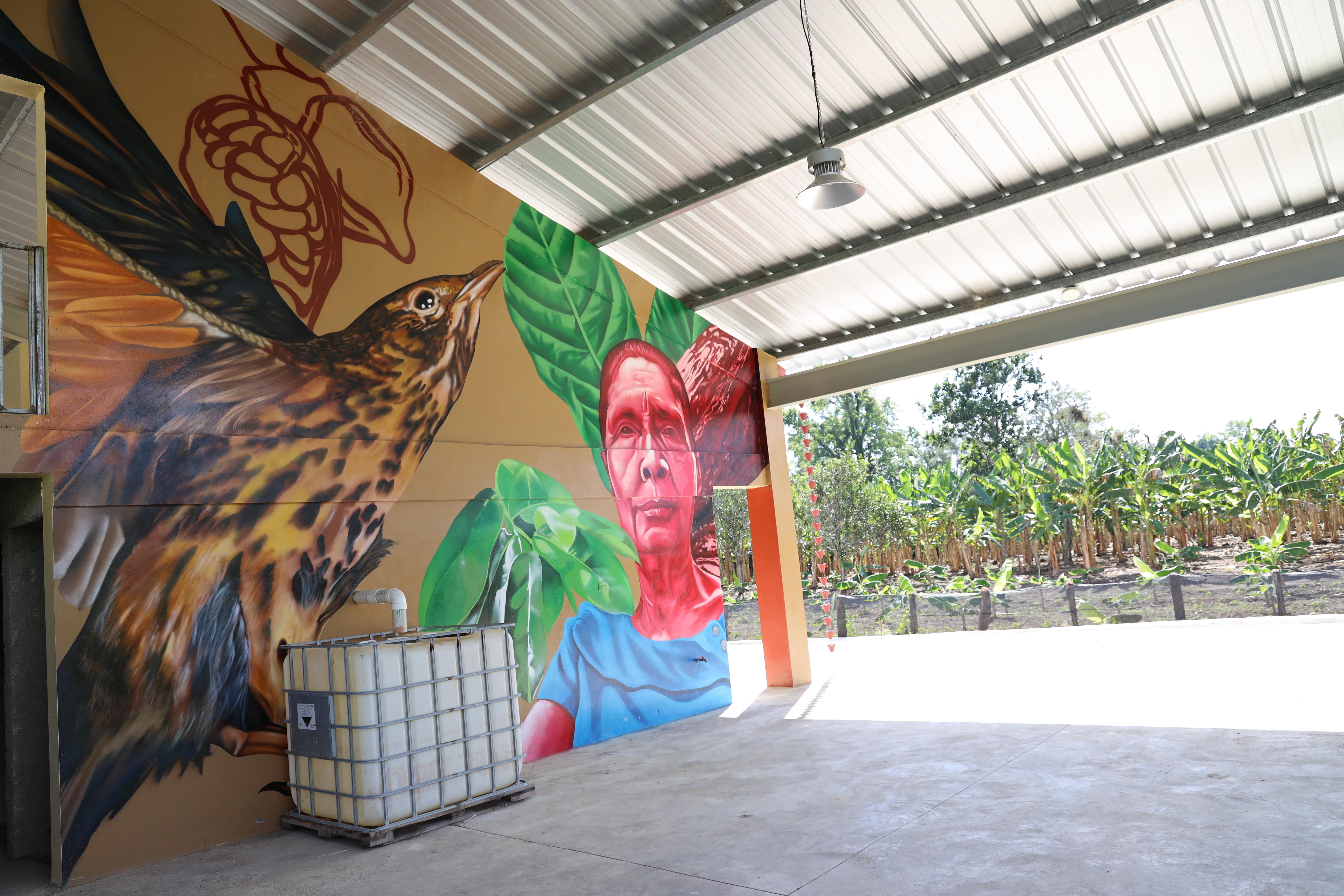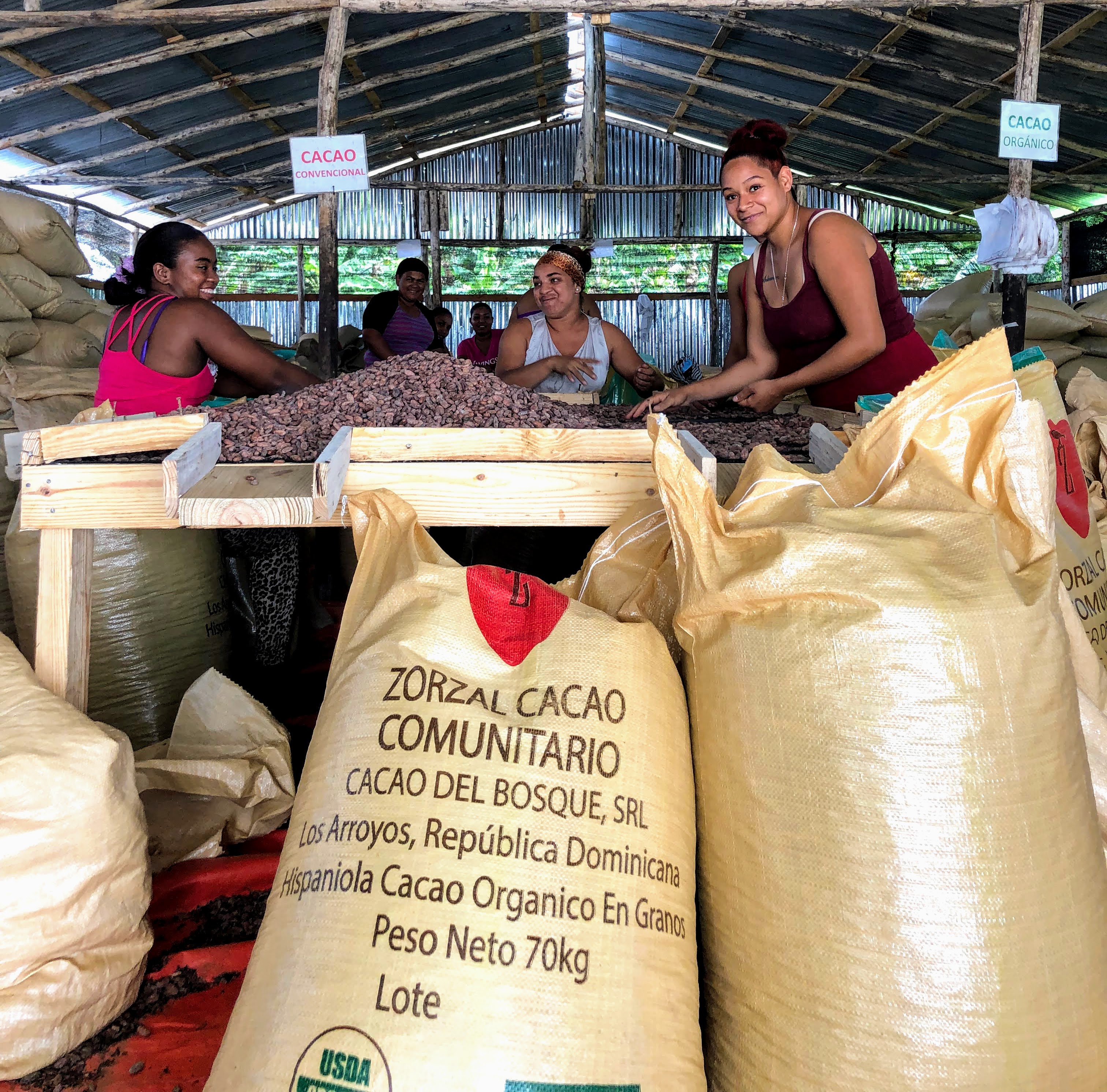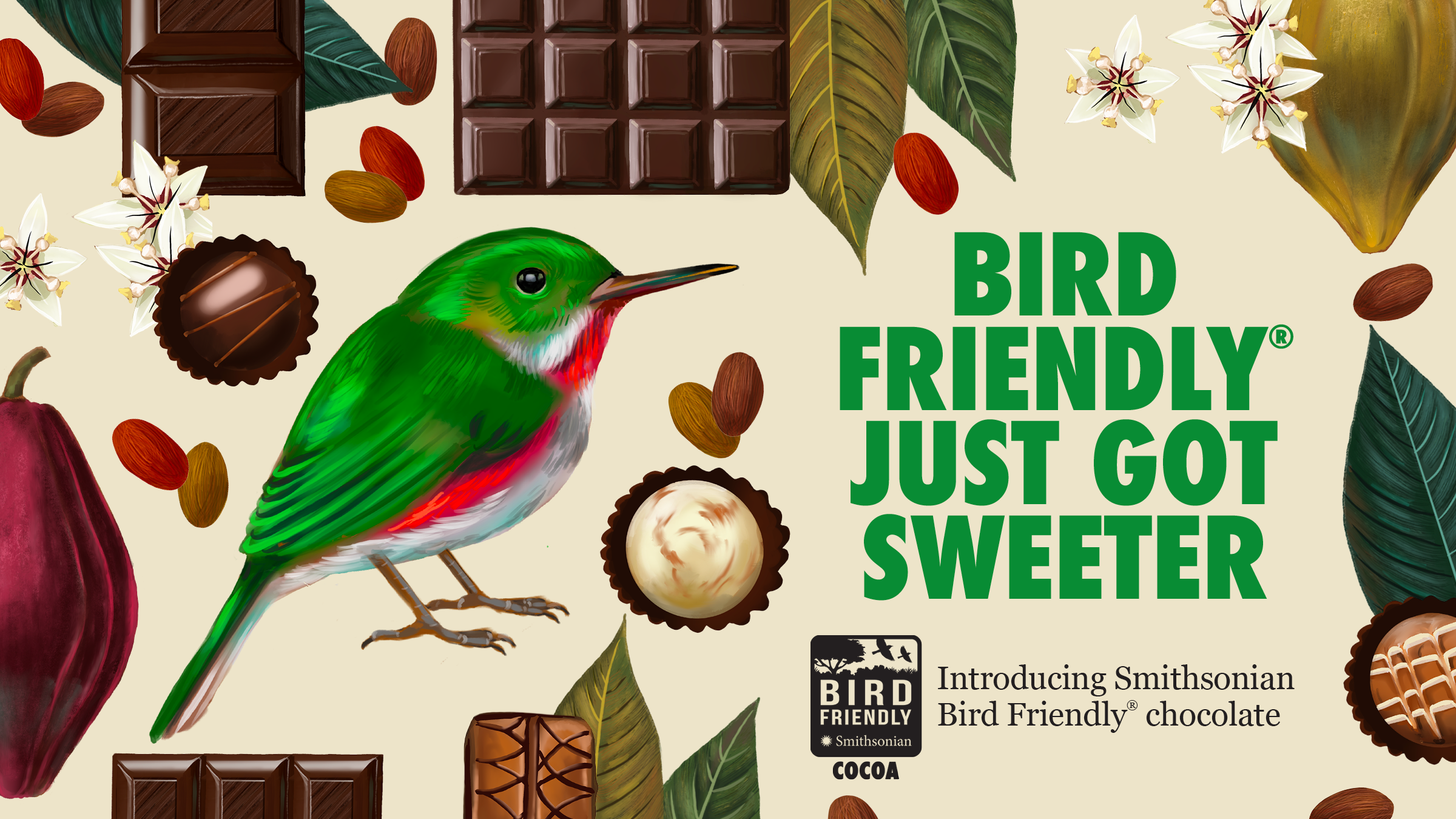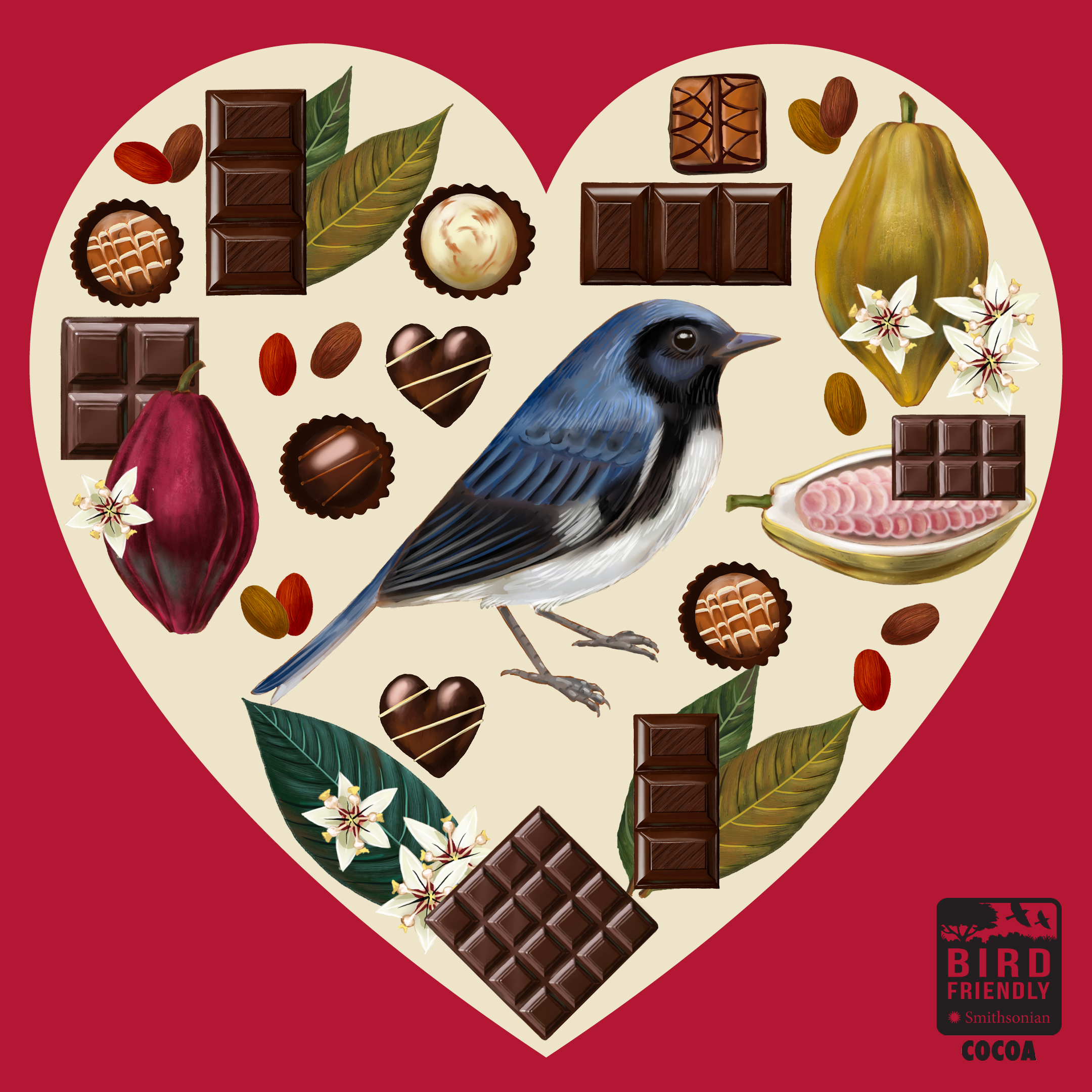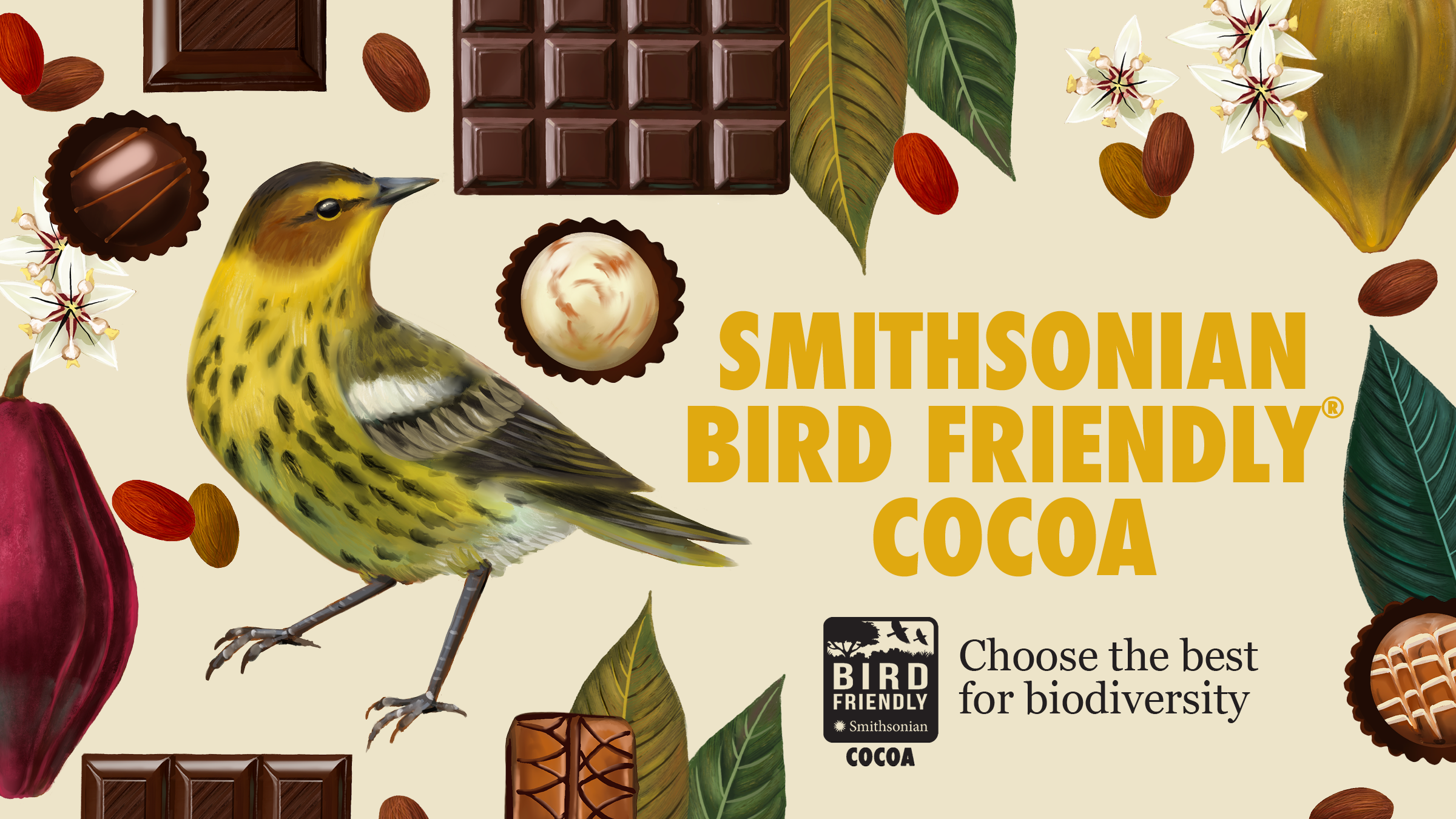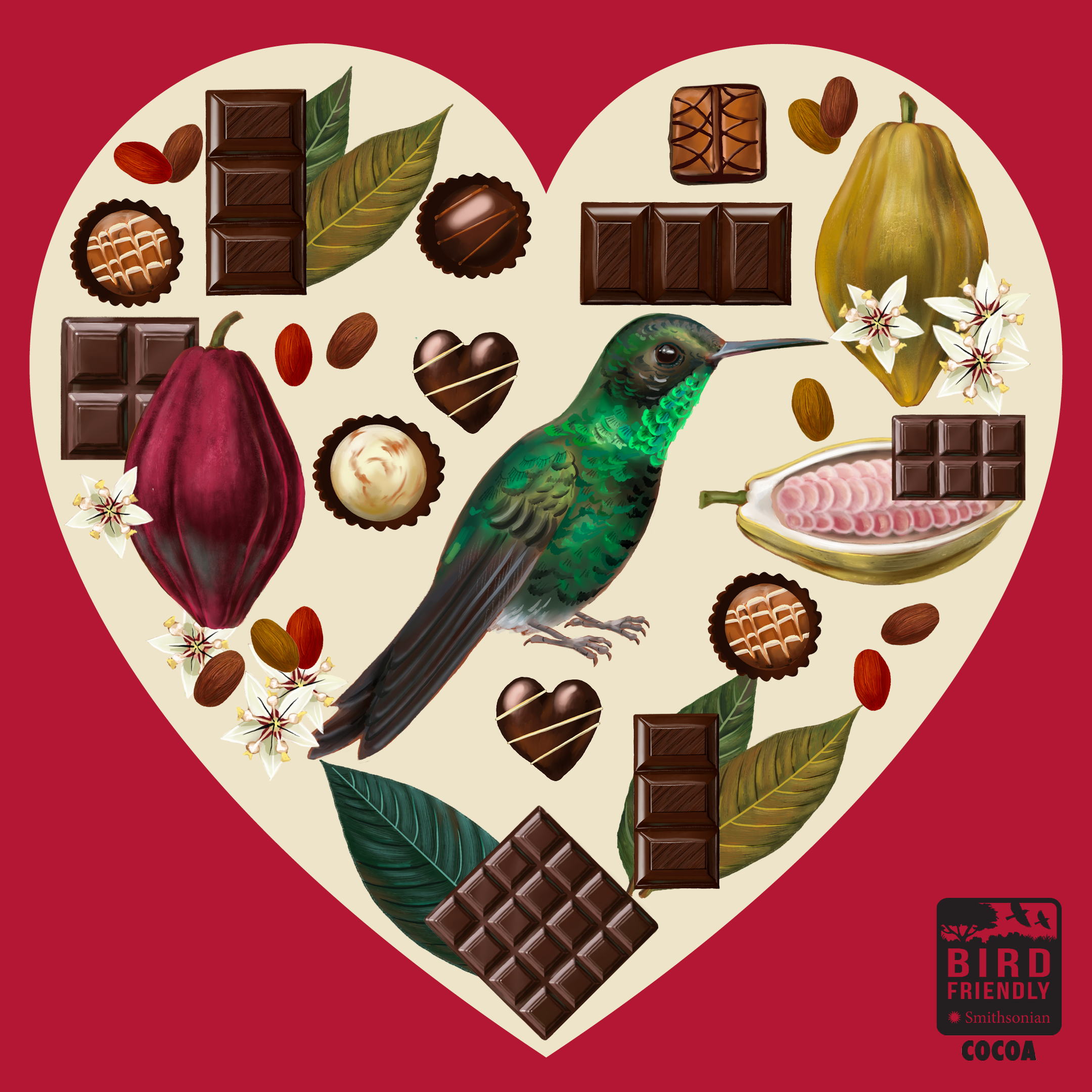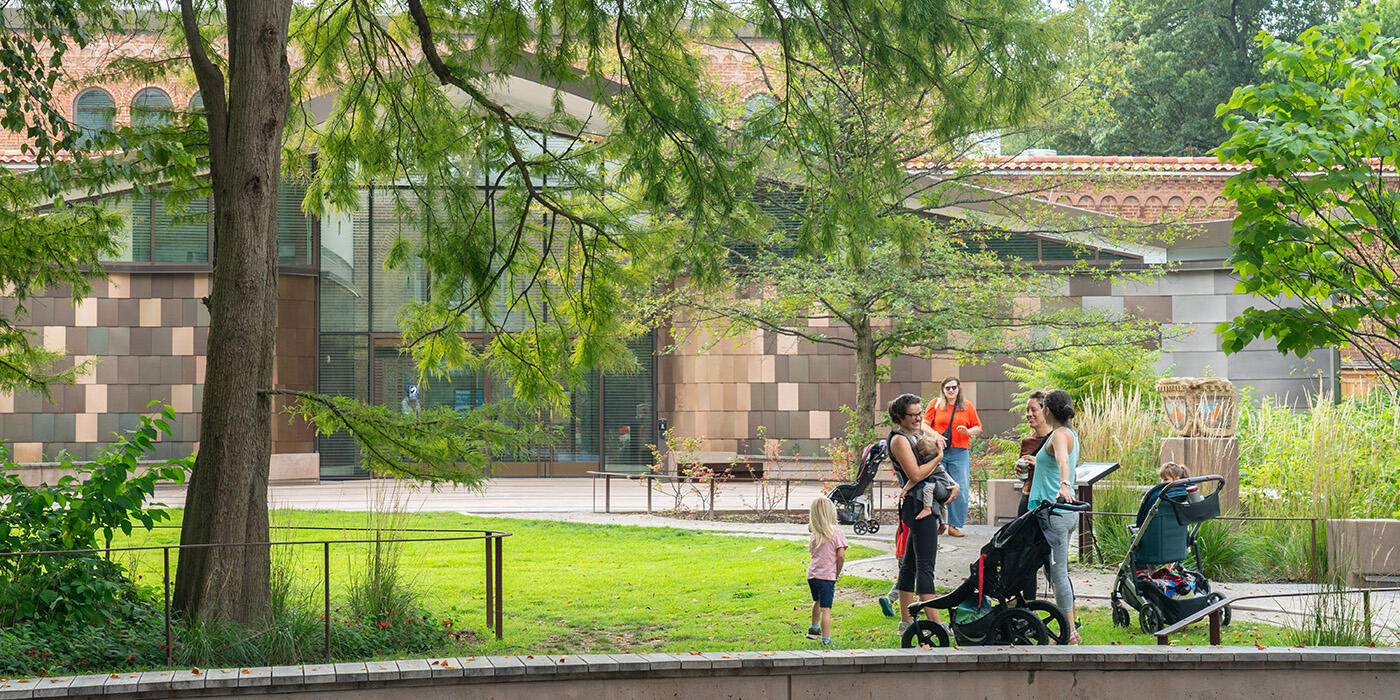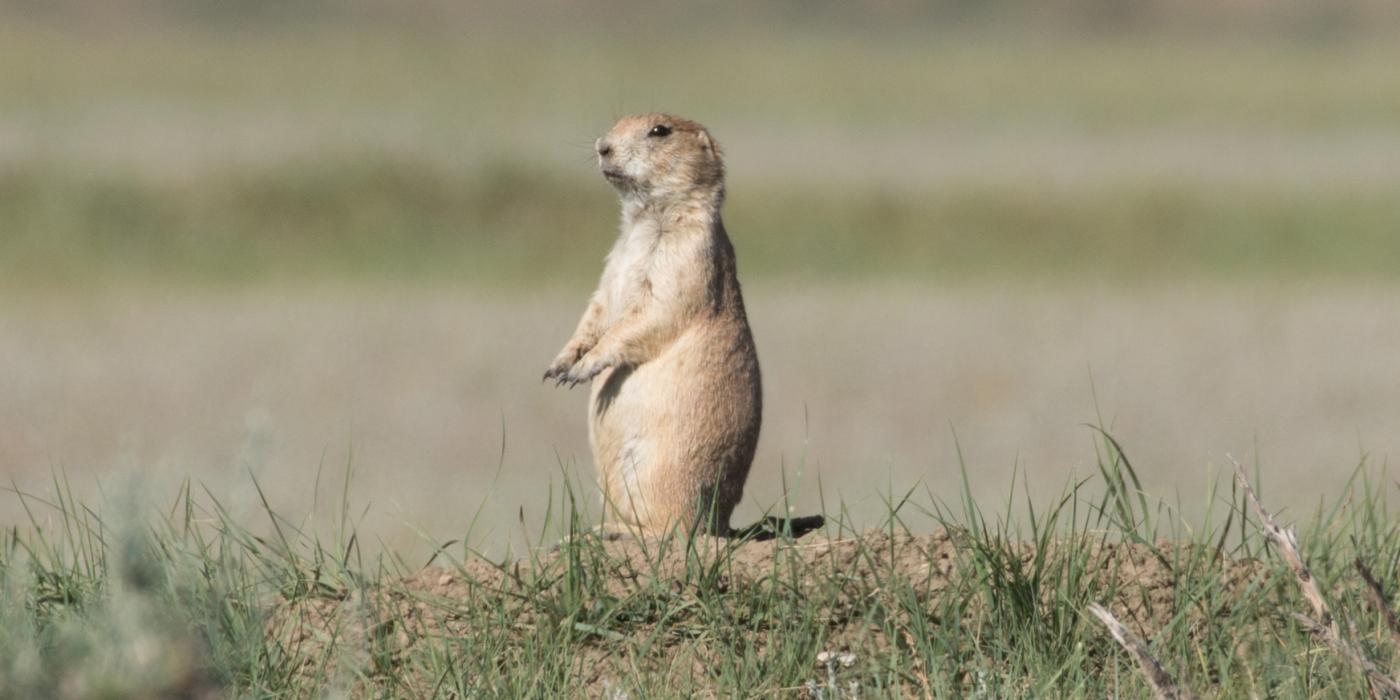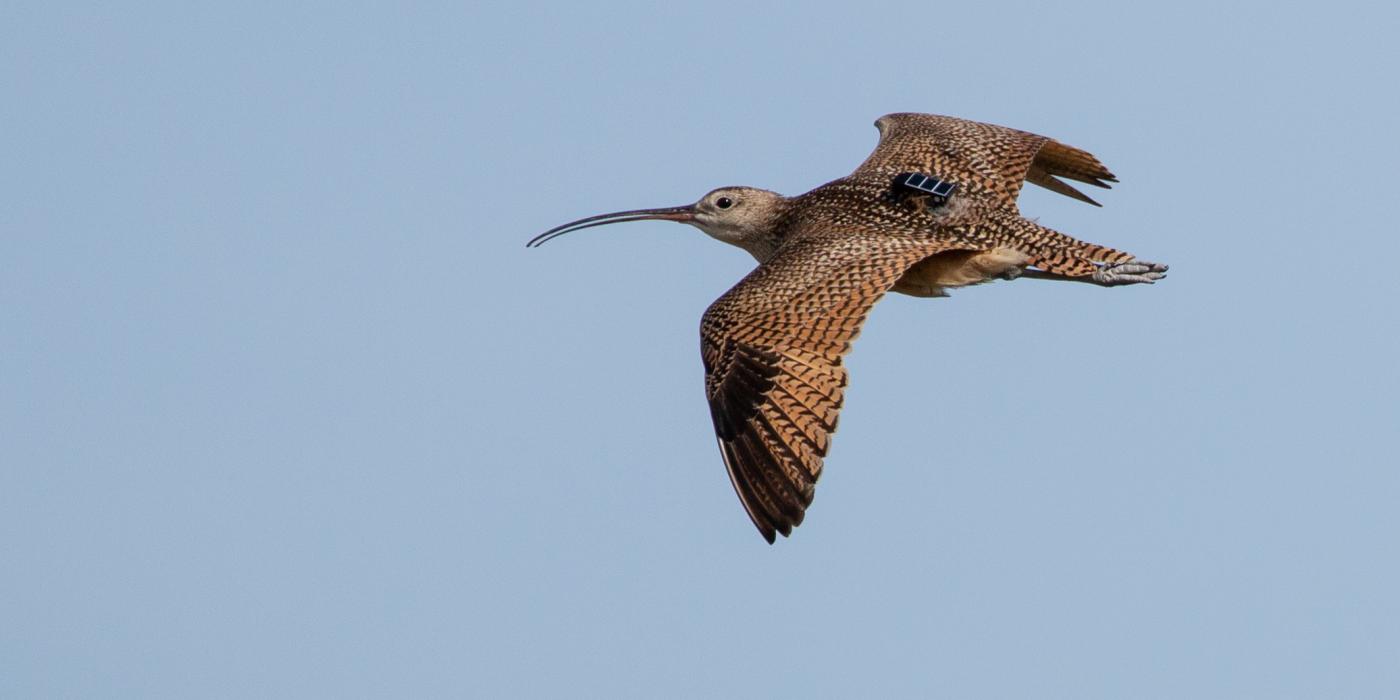Be a Tweetheart: Eat Chocolate and Save Birds
Smithsonian Bird Friendly Program Launches Cocoa Certification; Bird Friendly Chocolate Takes Flight
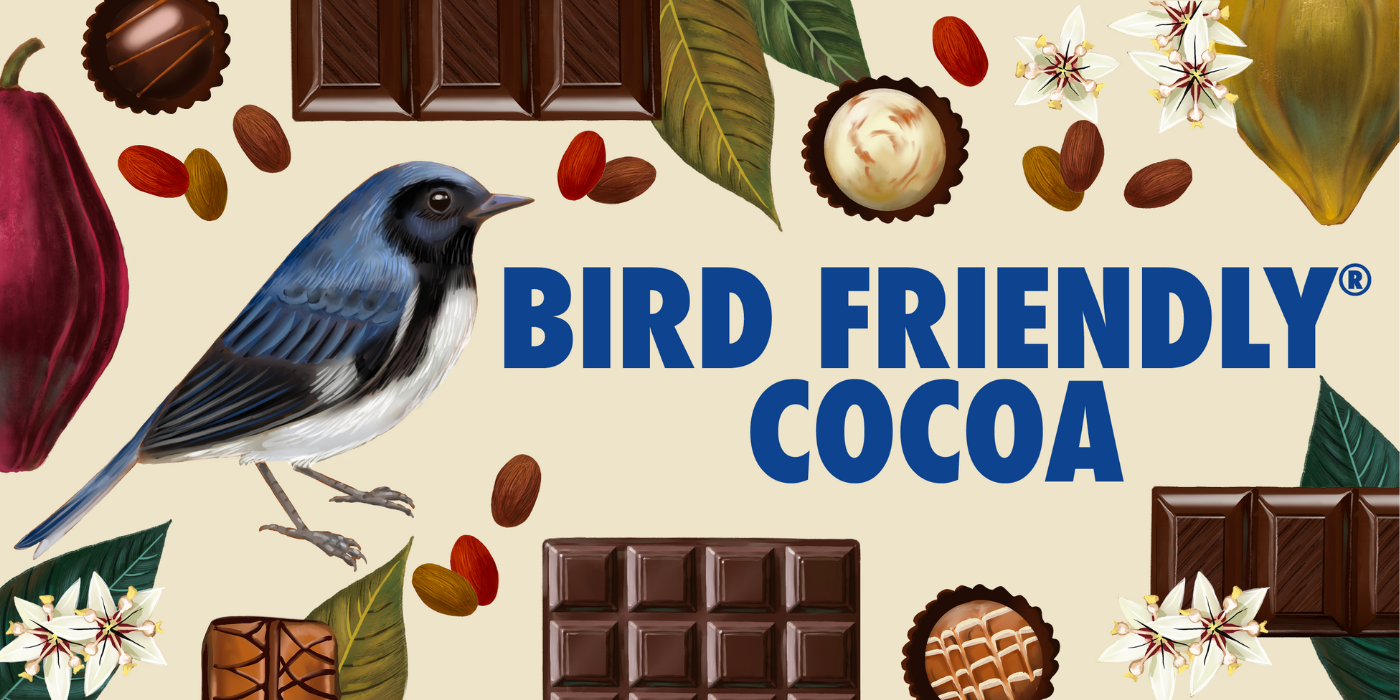
Eating chocolate is now better for birds, humans and the planet. The Smithsonian’s National Zoo and Conservation Biology Institute (NZCBI) has expanded its Smithsonian Bird Friendly certification program to include standards for cocoa farming. This is the only certification that guarantees 100% of the cocoa produced comes from farms that conserve birds and other wildlife by protecting forests and native shade trees. Drinking and eating Bird Friendly products is one of “seven simple actions to live Bird Friendly.” This year, people can make their Valentine’s hearts soar with Smithsonian Bird Friendly certified chocolate, now available for purchase.
“Smithsonian Bird Friendly certified cocoa and chocolate products help preserve critical habitat, protect biodiversity, fight climate change and support growers committed to farming sustainably,” said Scott Sillett, head of NZCBI’s Smithsonian Migratory Bird Center, which first created the Smithsonian Bird Friendly certification standard for coffee more than 20 years ago. “Cocoa is the second crop type certified by our long-standing program. Now, both coffee and chocolate lovers can live Bird Friendly while indulging in their favorite treats.”
Globally, most cocoa is grown in monocultures that destroy forests and remove native trees. While this potentially increases the amount of cocoa produced, it destroys vital habitat and often requires environmentally harmful pesticides and fertilizers.
All Smithsonian Bird Friendly certified cocoa farms meet strict environmental criteria developed by NZCBI scientists, making it the most biodiversity-friendly chocolate on the market. This certification strives to help farmers negotiate premium prices for their products, and because certified farms conserve shade trees that capture carbon, the Bird Friendly certification also helps fight climate change. Instead of clearing rainforests to plant cocoa trees, Bird Friendly certified cocoa trees are grown under and alongside the shade of native trees that provide food and shelter to migratory birds and tropical wildlife.
Ruth Bennett, Ph.D, research ecologist for NZCBI, found that cocoa farms with 30–40% canopy cover and diverse shade trees maintained similar bird diversity to native, undisturbed forests. Additionally, she found that maintaining forest around cocoa farms is critical for certain species, including species that primarily eat fruits and insects. Based on these findings, Bennett and colleagues developed the Smithsonian Bird Friendly certification standard for cocoa.
“Our research shows cocoa production can conserve migratory birds and resident tropical birds and benefit farmers,” Bennett said. “An incredibly committed group of passionate growers and chocolatiers partnered with us to pilot our program, and I’m looking forward to working with more farms and companies to certify their cocoa supply and chocolate products as Smithsonian Bird Friendly.”
In spring 2021, 17 cocoa farms in the Dominican Republic were inspected and certified as the first Smithsonian Bird Friendly cocoa producers in the world. The farms are part of Zorzal Cacao, a 1,019-acre bird sanctuary and farming collective in the heart of the Dominican Republic. Over 70% of the Zorzal Reserve is designated as “forever wild,” meaning native forest is completely preserved without agricultural intervention. Zorzal is the Spanish word for “thrush.” The reserve provides vital habitat for the rare and declining Bicknell’s thrush (Catharus bicknelli), among other migratory and resident bird species. Bird Friendly auditor trainings and farm inspections in the Dominican Republic were made possible by a grant from American Bird Conservancy.
To become Bird Friendly certified, third-party auditors, trained by Smithsonian researchers, perform on-farm inspections, assessing against the certification’s standards. Inspectors evaluate for criteria such as having 11 tree species per hectare and 30–40% canopy cover. Farms must also have organic certification to qualify for Bird Friendly certification to ensure that harmful pesticides do not impact consumers, farmers or biodiversity. If all criteria are met, the auditor issues Smithsonian Bird Friendly certification, and the cocoa can be traded as a certified crop. Zorzal Cacao marks the first-ever Bird Friendly certified cocoa farming collective.
For companies to use the Bird Friendly label on chocolate goods, they must sign a licensing agreement with the Smithsonian and agree not to mix any non-certified cocoa into the chocolate product. This guarantees that 100% of the cocoa in a Bird Friendly chocolate product comes from farms that conserve wildlife habitat. Royalties collected by the Bird Friendly program are reinvested in the certification’s research and conservation work.
Three craft chocolatiers are the first participants in the Smithsonian Bird Friendly certified chocolate program. NZCBI’s website has information on how to participate as a farmer or chocolatier and find Bird Friendly chocolate online.
Located in San Francisco’s Mission District, Dandelion Chocolate has crafted small-batch, bean-to-bar dark chocolate for over 10 years. Dandelion Chocolate builds lasting relationships with its cocoa producers and aims to highlight distinctive cocoa bean flavors within their products.
Located in Brooklyn, New York, Raaka Chocolate makes certified organic chocolate from scratch in small batches using unroasted cocoa beans and single-origin cacao. Raaka sources cacao directly from single-estate farms, farmer-owned cooperatives and grower-centered organizations.
Located in Asheville, North Carolina, French Broad Chocolates is a certified B Corporation and is deeply committed to sustainability. French Broad Chocolates Bird Friendly chocolate will be available for purchase in the coming months.
Since 1970, bird populations with annual migrations between North, Central and South America have declined by 29%, or almost 3 billion birds, signaling a widespread ecological crisis. Approximately 70 species of migratory songbirds journey thousands of miles from the United States and Canada to overwinter in cocoa farms in the tropics. Migratory birds—including orioles, warblers and thrushes—and local biodiversity have experienced sharp population declines as tropical forests disappear to make way for industrial agriculture, including cocoa farming.
Smithsonian scientists first developed Bird Friendly certification standards for coffee more than two decades ago to conserve habitat and protect migratory songbirds. Currently, Bird Friendly certification protects birds and habitats through the hard work of over 5,000 producers in 12 countries, producing more than 36 million pounds of coffee and cocoa annually.
In mid-March, NZCBI’s historic 1928 Bird House reopens after extensive, multi-year renovations. Themed walk-through aviaries will connect NZCBI visitors to migratory songbirds, waterfowl and shorebirds integral to North, Central and South American ecosystems, including species supported by Bird Friendly coffee- and cacao-growing farms.
The Smithsonian Bird Friendly certification program aligns with United Nations Sustainable Development Goals and is part of the Smithsonian’s “Life on a Sustainable Planet” initiative to collect new data about the changing planet, implement holistic and multi-scale approaches to environmental conservation and educate the world about why and how sustainable solutions to climate change can benefit people and nature.
Image Gallery
